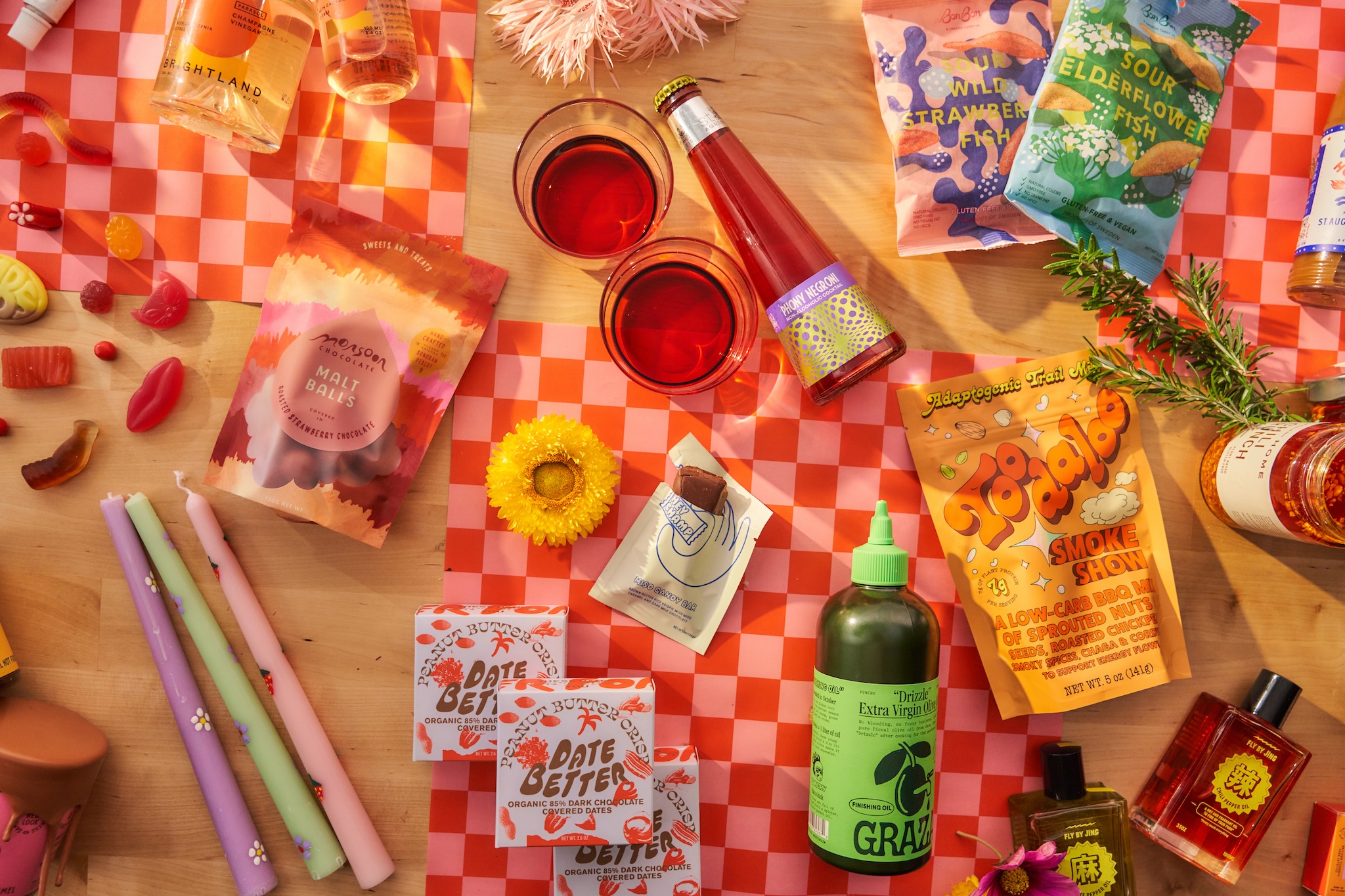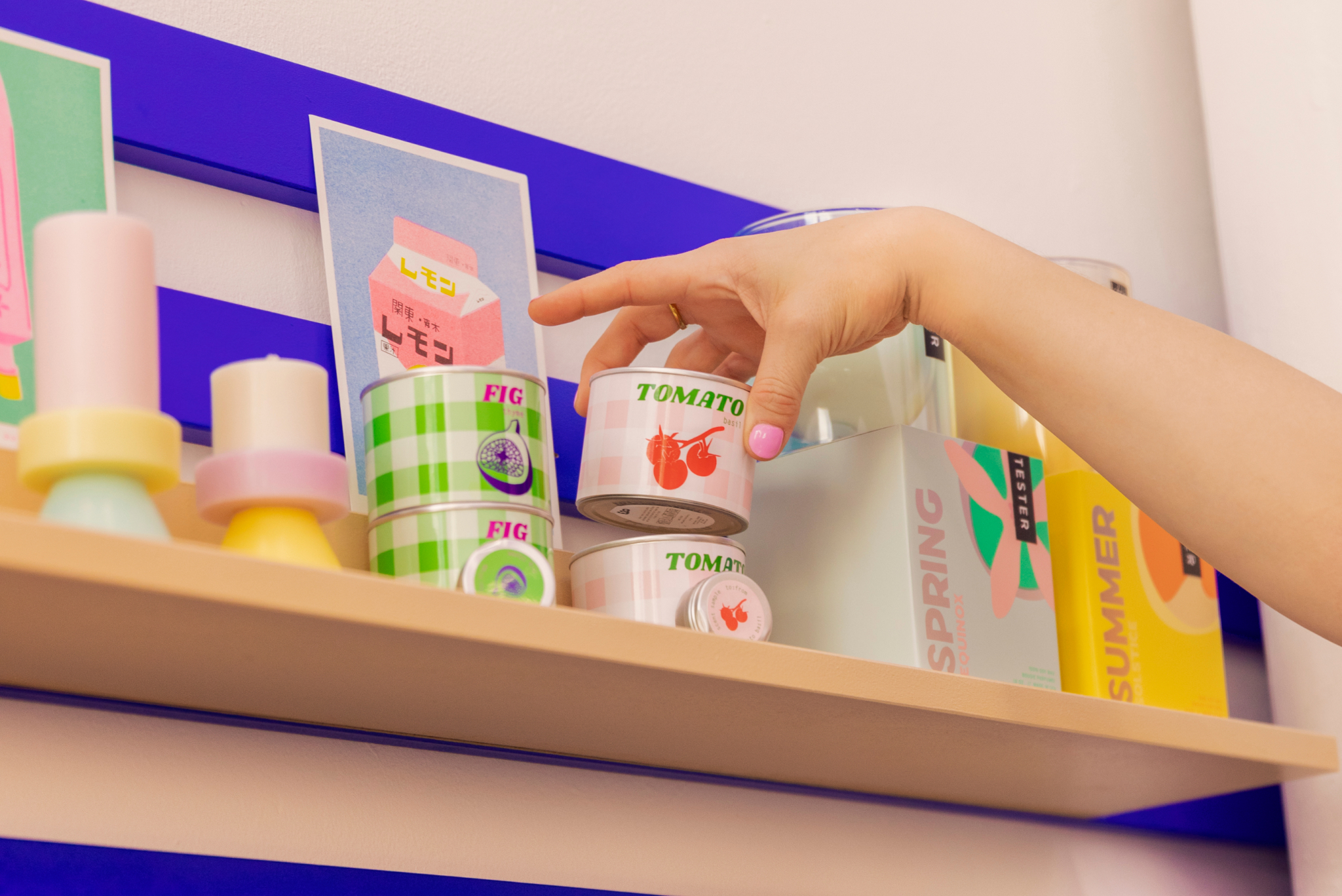
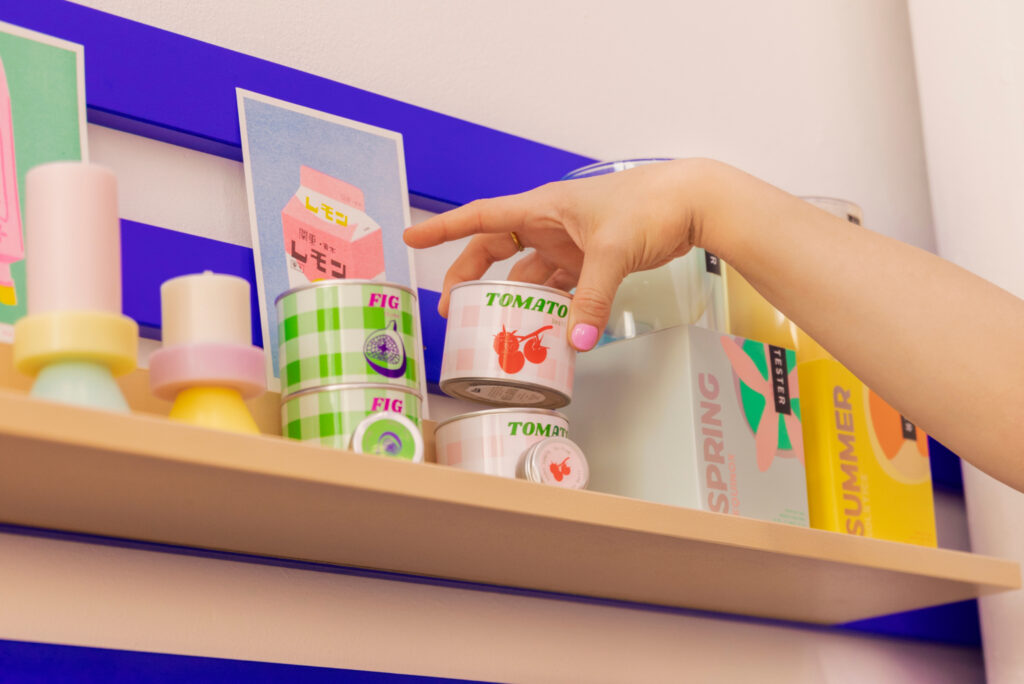
Getting strategic about how you buy wholesale is key to growing your business, establishing strong connections with brands, and satisfying your customers with one-of-a-kind products. According to the 2023 Global Wholesale Market Report, the wholesale market is valued at $48 billion, and that number is expected to grow to nearly $62 billion by 2026. That means that you’ve got plenty of opportunities to find great brands, but it can be overwhelming trying to cut through the noise. That’s why we’ve made this guide on how to order wholesale for new retailers.
What is buying wholesale?
Buying wholesale is the process of purchasing products in bulk so you can resell them at retail prices to consumers, either online or in person. Since you purchase a large quantity of items at one time when you buy wholesale, you can get those goods below their typical retail value and make a profit when you sell them to customers downstream.
Benefits of purchasing wholesale vs. retail
There are many benefits of purchasing wholesale for your business versus purchasing products at retail prices to resell, including the following:
- Competitive advantages: Once you establish wholesale relationships with brands, you can often gain access to new merchandise before consumers and get exclusive savings. Faire markets, for example, give buyers access to brands’ best deals of the season with discount matching up to 5%, so sellers can lower their prices even more for wholesale customers.
- Decreased shipping costs: You can often get much better shipping rates when you purchase in bulk. The Ship with Faire program, for example, enables brands to offer wholesale customers low, pre-negotiated rates with major carriers including UPS, FedEx, and DHL. When you scale up your purchasing, you can also eventually start ordering whole pallets instead of multiple smaller shipments, which can cut costs even more.
- Easier to scale up and grow: When you’re buying wholesale, you can remain nimble as the demand for products increases (or decreases). This makes it easy to continue growing at a rate that works for your business even when the market is volatile.
- Improved inventory management: Purchasing in bulk can help you avoid running out of popular items, achieve more accurate inventory counts, and build stronger relationships with suppliers so you’re in a better position to keep your most important inventory in stock.
- Lower purchase prices: Simply put, buying wholesale comes with a lower price per unit. That means you can keep your resale prices reasonable for retail customers and earn a higher profit with each sale. Wholesalers sometimes lower their prices on certain merchandise even more when they’re trying to clear out extra products, especially when getting ready for a new selling season.
- More one-of-a-kind products: Wholesalers offer their whole range of products to buyers, and an online wholesale marketplace like Faire can offer access to thousands of brands across the globe, all offering their complete catalog of products. A retail store, on the other hand, offers only a curated assortment of products at any given time.
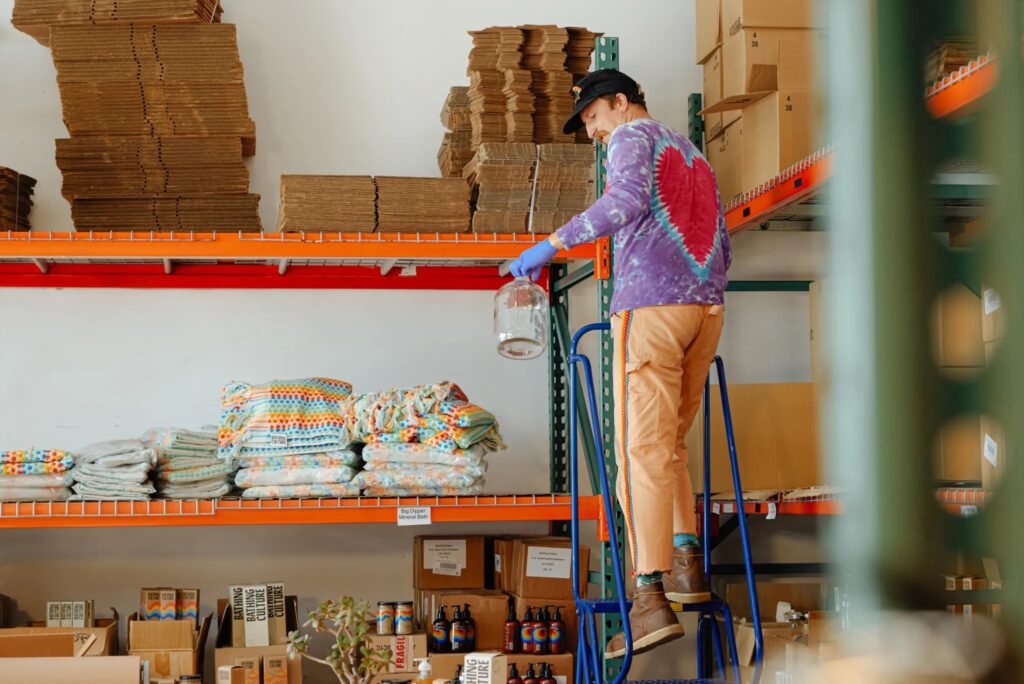
How wholesale pricing works
The basics of wholesale pricing are relatively simple. Retailers purchase merchandise directly from brands at a wholesale price, which includes the cost of labor and materials as well as a profit margin for the brand. Retailers then mark up those wholesale prices and sell the products to customers individually at a higher retail price so they can also make a profit. The retailer’s profit margin is the percentage of the retail sale price left over after paying for expenses including the cost of goods sold, operational costs, taxes, and more.
There are several different ways to calculate your retail pricing based on the wholesale prices you pay for merchandise. Most retailers use keystone pricing, which just means that the retail price is twice the wholesale price. Absorption pricing and differentiated pricing are two other common pricing models. Absorption pricing considers all the associated costs of a product but doesn’t consider what your customers are willing to pay or what your competitors are charging. Differentiated pricing involves setting higher prices for products that are more in demand and lower prices for products that are less in demand, which is especially popular for seasonal products.
Types of wholesalers to choose from
Generally speaking, there are six different types of wholesalers, including the following:
- Brokers and agents: These are not wholesalers themselves, but rather people who act as intermediaries to bring buyers and sellers together in exchange for a commission.
- Dropship wholesalers: This is another type of intermediary who helps facilitate orders for manufacturers, who then ship the merchandise directly to customers in the retail sector.
- Exporters and importers: These wholesalers work within the international goods trade with expertise related to logistics, shipping, and complying with various regulations.
- Manufacturers: These wholesalers make and sell their own goods in large quantities, which they can then sell to retailers at wholesale prices and/or directly to consumers at retail prices.
- Merchant wholesalers: This is a type of wholesaler who moves inventory by buying goods at bulk prices and selling them in somewhat smaller quantities to retailers for a tight profit.
- Specialty wholesalers: These are niche wholesalers who focus on a specific type of product and bring a high level of specialized knowledge about that product. Many of the brands on Faire are specialty wholesalers.
Faire’s B2B marketplace offers another type of wholesale solution by helping independent retailers support other small businesses. The online marketplace features wholesale merchandise from more than 100,000 independent brands around the world including apparel, shoes, jewelry, food and drink, housewares, pet products, beauty and wellness products, paper and novelty items, and more.
How do I buy wholesale products?
Before you start buying wholesale, think about what you need for your retail business. What’s your starting budget for inventory? Do you plan to source your goods locally or globally? Is sustainability a priority for you? Do you want to stock only hand-crafted products? Come up with a checklist of your preferences before you start your search.
1. Sign up for an online wholesale marketplace.
For small retail businesses, an online marketplace can be the quickest and simplest way to find your perfect wholesale match. You can search by shopping category, price, geography, and other filters, and sort through user reviews. Some marketplaces require annual or one-time membership fees while others are completely free. On Faire, where account sign-up comes at no cost, you can connect with more than 100,000 wholesale brands.
Faire also helps independent retailers find one-of-a-kind products, such as the One of A Kind Vintage Quilt/Bed Cover from Vintage Addiction or the Mixed Metal Hammered Cuff Bracelet from ZAD, which would be hard to find elsewhere. In addition, you can ensure that other retailers in your area aren’t selling the same items from the same brand with Faire’s exclusivity program. This is a beta program that allows retailers to become the only Faire stockist of a brand’s products in their local area in exchange for a commitment to a required annual spend. The exclusivity program is currently available for retailers and brands in the UK, France, Australia, the US, and Canada, and participating retailers must have a valid store address.
Buying through Faire in particular can also help you support small businesses and local economies. The online marketplace helps independent retailers level the playing field with larger retailers, form relationships with independent brands—both in their local area and across the globe—and encourage local shopping in their community by offering unique and one-of-a-kind goods.
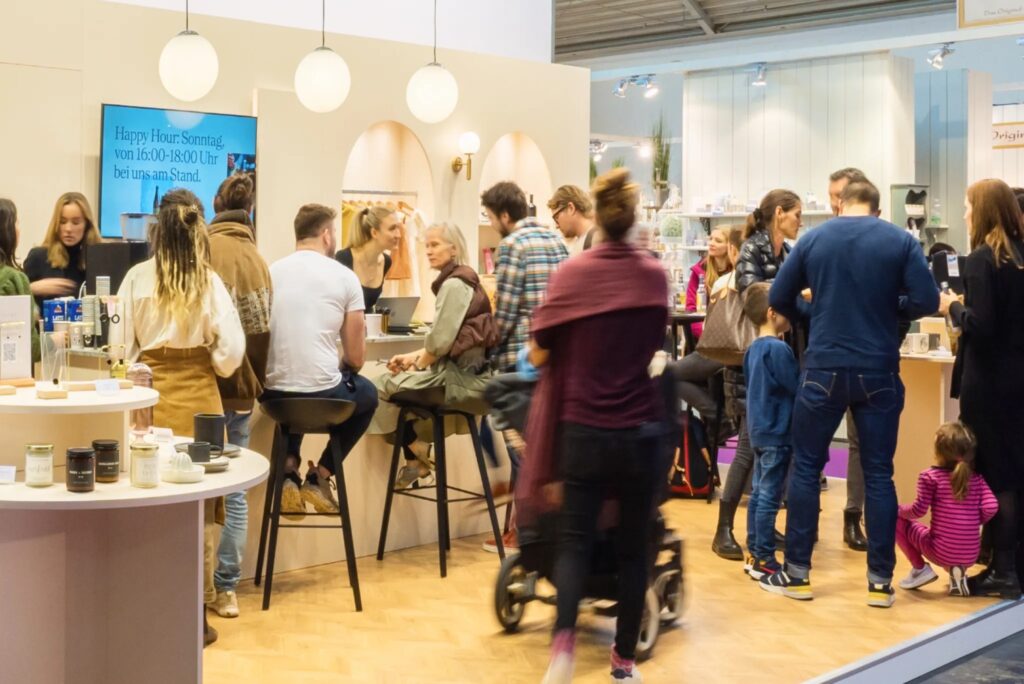
2. Attend retail trade shows in person or online.
At retail trade shows, wholesale distributors and manufacturers exhibit their wares to retail attendees. By going to trade shows for your particular niche, you can discover brands and start making a list of contacts to reach out to directly. There are trade shows for everything from eyewear to jewelry to home decor, and they’re a great starting point when it comes to building your network. Faire even offers virtual retail trade shows—the Faire markets—that you can attend from the comfort of your home. Skip the travel, get connected with more than thousands of brands, and save money at these biannual events.
3. Keep up with trade publications in your niche.
No matter what retail niche you’re in, there’s likely a trade publication for it. Do you sell fashion and apparel? Check out a textiles trade magazine like California Apparel News. Are you selling home decor items? Home Accents Today has the latest trends and insights. The advantage of keeping current with these magazines is that brands may advertise within their pages, and you can scoop up some under-the-radar distributors.
How can I pay for big wholesale purchases?
Placing a large wholesale order can be costly, especially for a new retailer. That’s why Faire created the Open with Faire program. This exclusive offering for new store owners helps cover the cost of stocking up on inventory so you can save your cash for things like rent and payroll. Get up to $20,000 in inventory financing with 60-day payment terms—meaning you can stock up now and pay 60 days later.
Not sure where to start? Aspiring retailers can visit Faire Academy for a helpful primer on how to open a store for the first time.
What certificates do I need to start buying wholesale?
Though requirements vary from state to state—and you should check your local laws—there are a few must-haves for retailers before they can buy wholesale products.
Resale certificate: A resale certificate may also be called a tax exemption certificate or a wholesale license depending on where you live. It identifies you as a legal reseller and allows you to buy wholesale items without paying a sales tax. The forms for each state are different, and wholesalers may ask to see your certificate before they sell to you.
Seller’s permit: In order to get the aforementioned resale certificate, you must already have a seller’s permit. You need a seller’s permit to legally collect sales tax from your shoppers.
Forms of identification: Wholesalers may want to see some type of ID before they can sell to you. That could be the tax ID number for your retail business or simply a driver’s license.
Bank account information: Ideally, you’ll have a bank account specifically for your business to pay your wholesale partners. Having a separate account makes tracking cash flow and keeping records for taxes easier.
What are the best practices for buying wholesale?
Consider the minimum order quantity. Minimum order quantity, or MOQ, is the lowest number of items you can purchase from a brand at one time. Instead of product quantity, you may also see this listed as an order minimum with a dollar amount or as a case size, which is the multiple of which a given product is sold. If you see a wholesale listing for wool blankets and the MOQ is 10, for example, that means you have to order at least that many blankets to buy from that brand. If you’re limited by a tight budget, paying close attention to MOQs is crucial.
Avoid overstocking inventory. Although it may be tempting to buy a surplus of merchandise when you find a good price, it’s important to factor in inventory carrying costs. Inventory management software, like inFlow Inventory, will give you a real-time look at your stock levels. You can set reorder points for each product to ensure you maintain the perfect stock level. It can also track units of measure, so you can buy by the pallet and sell by the box.
Request merchandise samples. Before you place a large wholesale order, you’ll want to ensure the quality is up to your standards (and the standards of your customers). If obtaining samples isn’t possible, then find a brand with a low MOQ so you can start by ordering a smaller quantity before you fully commit to that larger order.
Pay attention to industry trends. Do you know what Pantone’s color of the year was for 2024? If you sell apparel, decor, and accessories, trends like those are good to know. (It was Peach Fuzz, by the way.) As mentioned, trade publications are a great way to stay up-to-date with current and forecasted trends.
Understand lead time. A brand’s lead time is how long it takes in advance to prepare and deliver your wholesale order. Depending on whether you’re ordering locally or globally, lead times can vary greatly. For peak shopping periods like the holidays, lead times might be even longer, so it’s good to buy early. The last thing you want is your New Year’s Eve decor arriving at your shop … on January 2. On Faire, brands list their lead times on their shop pages, and you can always send a quick message to ensure orders will arrive on time.
Buy from knowledgeable brands. The brands you work with should have expert knowledge about their product category. If you sell jewelry, for example, you’ll want to choose a brand that knows the difference between materials like gold-plated and gold vermeil. Any vendor who can’t answer simple questions about their products is not a good choice.
Don’t forget about customer service. Even if the brands you choose have great products at a great price, that can be undermined by terrible customer service. Prioritize brands that are reliable, communicative, and attentive. If things go wrong with an order, it makes a difference to have great customer support that solves problems quickly.
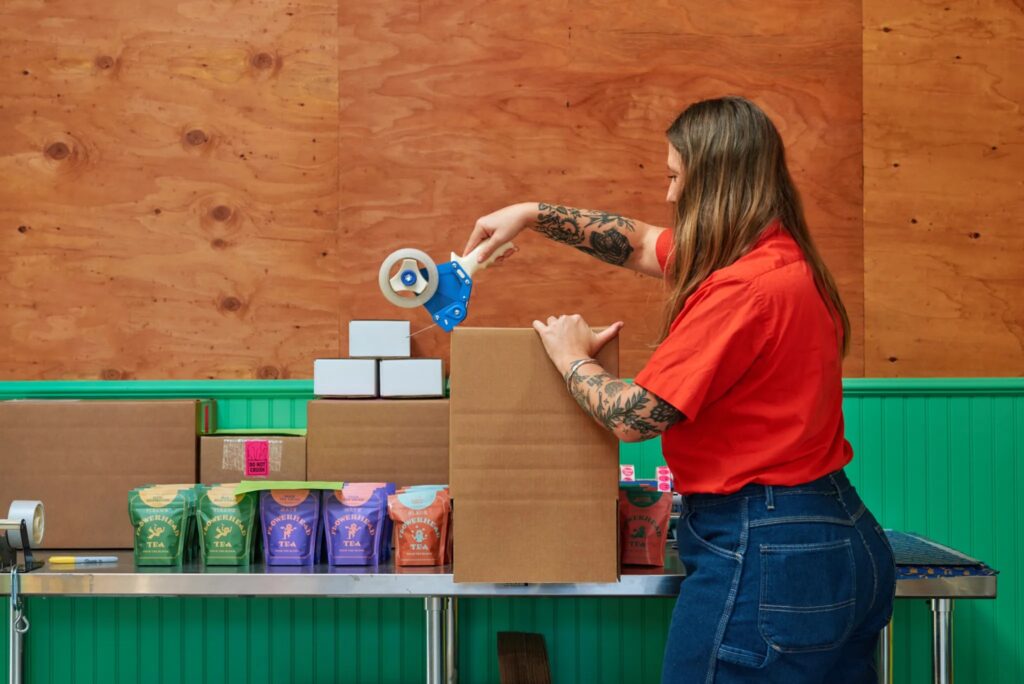
How do I choose products to buy wholesale?
Do careful research on what products are popular and trending. Maybe wax candles are out and soy candles are in? Are dangling statement earrings all the rage or is it all about the petite huggies now? On Faire, you can shop by category and sort by bestselling products to home in on just the right items for your store.
Beauty and wellness
In Faire’s makeup category, you can easily sort the results by face, lips, nails, and eyes to find exactly what you’re looking for.
Paper and novelty
Look through this section to find books, stationery, greeting cards, tabletop games, and even party supplies. Many of these brands create with handmade and even eco-friendly materials.
Footwear
Find your store’s perfect fit. Sort by sandals, boots, slippers, or loafers. You’ll find a section for women and men, both of which also include makers of shoe care products — a potential kitting opportunity for footwear that requires maintenance or protection (like leather).
Watches
Shop bands, wristwatches, and even pocket watches for any type of customer. Filter by color and material, as well as price and occasion for shoppers who visit your store with a specific budget or event in mind.
Jewelry and accessories
Browse trending brands section to see what’s hot right now, from chunky gold to semi-precious natural stones. You can even browse by stone type for those customers looking to align their style with their birthstone.
Clothing and apparel
Faire’s apparel selection carries a wide variety of trendy finds, from wide-leg denim pants to button-down plaid. You can filter by different categories like activewear, dresses, maternity wear, and more.
Home decor
Find furniture to suit your retailer’s specific aesthetic. In the furniture category, you can explore vintage and modern pieces in all kinds of styles.
Food and drink
Score great wholesale prices on popular snacks, beverages, and pantry staples like Momofuku Chili Crunch or Poppi prebiotic soda.
Kids and baby
This broad category caters to several different store types: Whether you sell to new parents trying to fill their nursery, or to toddlers who have finally outgrown their winter coat, you’ll find your next stock here. In the toys and learning category, you can also browse educational puzzles, games, and children’s books for all ages.
Bags and backpacks
Whether your shoppers are into fanny packs, cross-body, or weekender bags, there are tons of options to explore, and for every season.
Finding the right brands and understanding what wholesale products to buy is the first step to building a thriving retail business. Taking the time to understand more about the wholesale business helps you avoid costly missteps and wasted time. So, ask strategic questions, do some research, and compare your many options as you start your wholesale buying journey. If you’re a new retailer, read more about Open with Faire and learn how to apply for up to $20,000, with 60-day payment terms, to stock your new shop.

